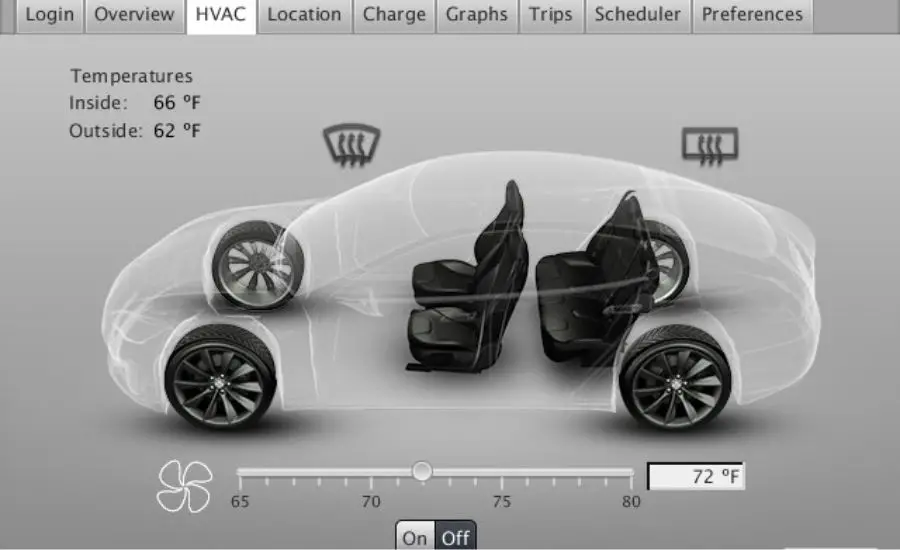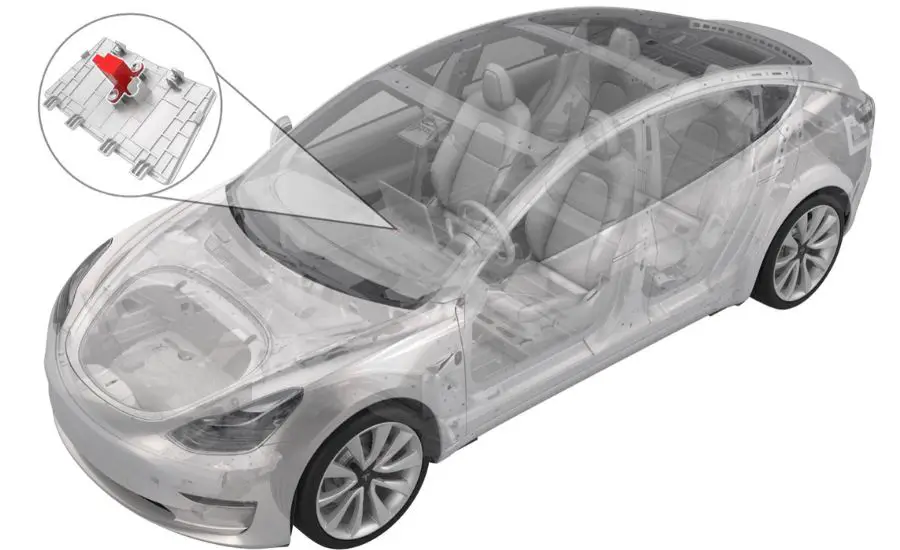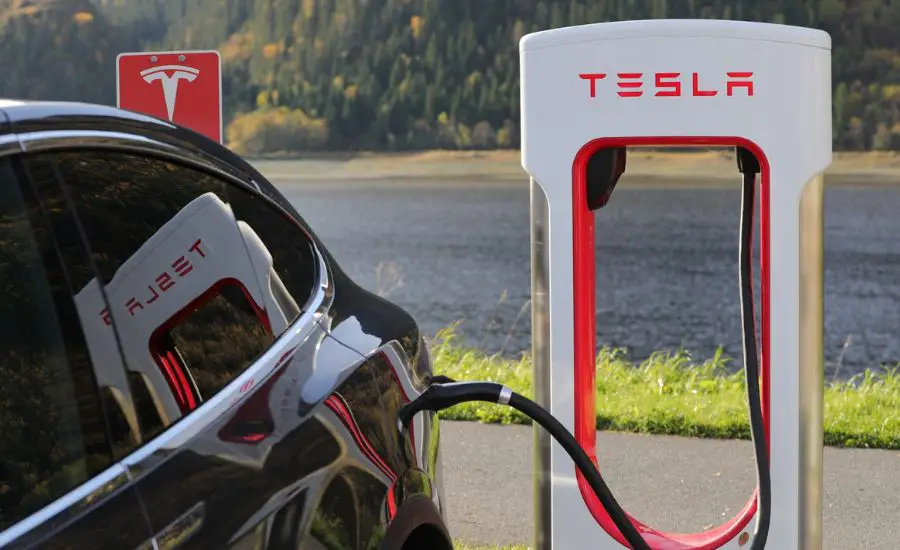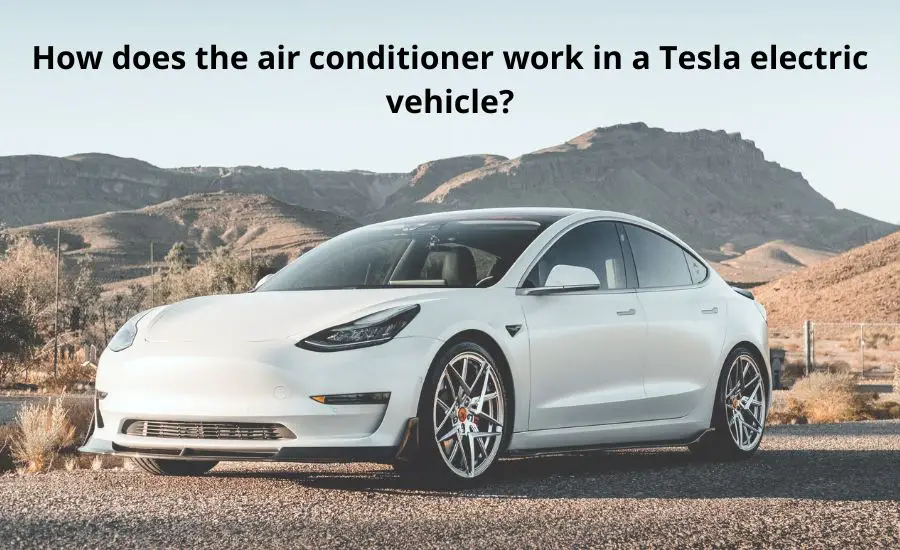Revamping the conventional internal combustion engine with an electric motor and battery power has been a revolutionary leap in resolving several issues. However, this overhaul necessitated Tesla to restructure its climate control approach in its electric vehicles entirely.
Unlike traditional automobiles that rely on the engine’s coolant for cabin temperature regulation, Tesla models adopt completely different mechanisms inside their cars. Let’s discuss the innovative ways through which Tesla addresses the challenge of climate control in its vehicles.

Contents
- 1 So, how does the air conditioner work in a Tesla model?
- 2 What will occur if the HVAC system is turned on?
- 3 The vitality of the compressor for Tesla’s electric cars
- 4 Temperature sensor and its way of functioning
- 5 The necessity for refrigerant in Tesla cars
- 6 Possibility of air conditioner draining the battery
- 7 FAQ
- 8 Summary
So, how does the air conditioner work in a Tesla model?
Tesla’s innovative Energy Storage System, also known as ESS, employs a unique method of utilizing water or a mixture of glycol to maintain the battery’s optimum temperature.
The mixture is circulated throughout the battery using a pump, while an independent chilling unit helps to maintain its low temperature.
The primary goal of this advanced cooling system is to maintain the battery at a uniform temperature, which enhances its longevity and augments its overall performance. So, Tesla’s ESS possesses its own cooling system to prevent utilizing too much power.
The AC compressor is located on the facade of the electric car, making it convenient to attain energy from the ESS.
Therefore, ESS is a critical component of Tesla’s air conditioning system as it guarantees that the battery operates effectively in any weather condition. It undertakes it by dispersing the chilled air through the vents.
During hot weather, the ESS assists in averting battery overheating while in cold weather it averts the battery from being excessively cold.
So, Tesla’s AC system is an incredibly efficient method of battery cooling, which not only ensures optimal performance but also elongates the durability of the battery pack.
What will occur if the HVAC system is turned on?
Upon activating the HVAC system in Tesla electric cars, a couple of actions will take place. The vehicle’s computer will undertake a sequence of tests to verify the efficient operation of every part.
Additionally, the system also observes the temperature of inside and outside air to identify the ideal amount of cooling or heating required.
To begin with, the computer examines the placement of solar panels to establish if they are exposed to sunlight. If this is the case, the system harnesses the energy to invigorate the HVAC system, reducing reliance on the battery pack.
Consequently, it assesses the available amount of battery to identify how much power is present for running the HVAC. If the amount is low, it will consume less energy to prevent rapid battery drain.
The compressor is activated by the computer, pumping refrigerant through the system to regulate the air temperature according to the selected settings.
Once it is done, the refrigerant passes through an array of coils that further maintain the temperature settings of the air before its cabin entrance.
Eventually, the conditioned air is circulated into the interior of the car through an arrangement of vents, allowing you to adjust the flow of air.
The whole procedure is automated and requires a short amount of time to be completed, providing the driver with an exceptional level of passenger comfort, regardless of the outside temperature.

The vitality of the compressor for Tesla’s electric cars
The compressor is a vital component of any air conditioning, and this is especially accurate for Tesla’s AC system. The company of electric vehicles finds compressors utterly important for the maintenance of suitable pressure to prevent the buildup of ice and ensure cabin comfortability.
Despite their reliability, sometimes operation failures may occur, leading to issues with the comfortability of the electric car utilization and the high cost of fixing.
To comprehend the general performance of the compressor, it’s necessary to understand its functions. It has two essential procedures to undertake in order to regulate air conditioning.
Initially, it should constantly increase the refrigerant’s pressure to ensure it’s greater than the ambient temperature. Consequently, the evaporator’s pressure should be set to low to maintain the high performance of the refrigerant.
Nevertheless, Tesla’s air conditioner possesses climate control detectors which lead to energy efficiency.
But it’s still crucial to have the electric cars constantly inspected for any issues and be careful with too frequent utilization of the AC system. Additionally, make sure to reach out to Tesla’s service if the compressor collapse occurs.
Temperature sensor and its way of functioning
The AC system of Tesla cars is equipped with a temperature sensor that plays a crucial role in regulating their climate control system.
The sensor of the electric vehicle constantly inspects the ambient temperature to ensure the optimal cabin temperature.
By making the necessary changes, the sensor assists with maintaining a comfortable interior environment.
There are two temperature sensors in the electric vehicle, one for the air inside and the following for the outside air. Interestingly, this technique is compatible with other cars as well, resulting in the possibility of its usage in the future to reduce the damage to our surroundings.

The necessity for refrigerant in Tesla cars
Tesla’s air conditioning distinguishes itself from conventional systems by utilizing a heat pump mechanism rather than relying on refrigerant. The innovative method operates by pumping heat from the interior of the electric car to the exterior.
Although this approach may appear unacceptable at first glance, it is indeed a logical solution based on the principles of natural sciences.
Heat pumps have a remarkable efficiency in transferring heat, and by utilizing the residual heat, Tesla’s AC system can effectively maintain a cooler internal temperature compared to the conventional cooling system.
Despite the benefits, there are some disadvantages to this way of functioning of the AC system of electric cars. Initially, it can be less effective in cold air due to the reliance of the heat pump on ambient temperature.
Consequently, in case the car is exposed to sunlight, the cooling system may operate less effectively because the sun can provide heat by counteracting the work of the AC system.
Therefore, although innovative air conditioning provides an effective means of climate control and ecological use of energy, it’s still important to pay attention to the car.
Heat pump and its operation
Heat pumps are utilized to keep the battery pack activated at the preferable temperature to prevent it from affecting the electric car. Thus, the heat pump passes an antifreeze mix around the ESS.
The obvious advantages of utilizing heat pumps are their ability to work in both directions and to transfer more heat than the amount of required energy. Hence, heat pumps provide cars with the needed degree of hot or cool air as they can cool or heat the cabin.
Possibility of air conditioner draining the battery
Having the air conditioner on actually affects the battery by using it up faster. So, Tesla utilized a positive temperature coefficient in order to retrieve less thermal energy.
Nevertheless, it might be crucial to set the selected temperature prior to using the car. It will lead to lowered usage of energy. An additional possible method of preventing rapid battery drainage is to utilize the climate-off function available for the cars.
This feature should be used when the passengers aren’t present in the car. It will deactivate the air conditioning and continue keeping the preferable temperature inside the car.
Consequently, once the owners of the vehicle return, the temperature will be well-maintained and AC won’t waste much energy to keep it at this level.
Nevertheless, you may have asked yourself if having an air conditioner on can affect the car’s performance.
Even though it causes the battery to finish earlier than expected, generally it doesn’t affect the performance of the car in an unfavorable way. Instead, an active air conditioning system enhances the efficiency of the car by maintaining more preferable surroundings for the passengers.
Still don’t neglect to possess a high-quality charger to charge the car when necessary and refresh the inside air to get rid of dust and other unnecessary things.

FAQ
Answers to common questions are given below.
Does Tesla use AC to cool battery?
The importance of preventing battery pack overheating cannot be overstated, as any individual who has had a dead battery can attest.
Tesla employs a sophisticated liquid cooling system that not only cools the electric motors, but also regulates the temperature of the battery pack. The pack is positioned below the car’s floor pan.
The cooling system functions by circulating water through the motors and battery packs, maintaining them at the ideal temperature. Afterward, the water is cooled by the radiator, ensuring that the temperature of the car’s battery pack remains stable.
Tesla claims that this method of operating keeps the battery pack at optimal temperatures, resulting in increased longevity and improved performance of the car.
Why is my Tesla AC not cold?
In some cases, Tesla’s AC system may not operate according to the preferred settings, and the cause may be temperature sensor malfunctioning. This situation is particularly inconvenient during the summer months because it leads to hotness inside the car.
It is necessary to take the car out and inspect if the incoming air is cold enough to cool the air conditioner. Make sure to check it carefully as it can help with tackling the possible issue.
If it’s the case, try replacing the air temperature sensor, changing the compressor, fully reactivating, or activating the cabin overheat protection. While some of them are pretty easy and not so time-consuming, some methods of solving can be costly and difficult.
Nonetheless, in some cases, it might be necessary to reach out to Tesla’s contact service if the issue persists or in order to replace the air conditioning compressor.
How does Tesla have heat and air conditioning?
One of the remarkable features of electric vehicles is their highly efficient cabin heating system, which can provide rapid warming in cold climates.
Moreover, the vehicles typically come equipped with exceptional air conditioning systems that can dispense cool and refreshing air during scorching summer weather.
This heat and air conditioning ensure that you remain comfortable throughout your journey, regardless of the temperature conditions.
How does the AC work on a Tesla?
Electric vehicles utilize an innovative heat pump mechanism to transfer heat energy from the outside environment to the car’s cabin.
This technology is electrically powered, and it plays a crucial role in maintaining a suitable cabin temperature regardless of the weather conditions. So, a heat pump works as a regulator, assisting with temperature maintenance.
Additionally, AC is placed at the front part and the ESS is located at the back of the vehicle. This structure alleviates the procedure of AC extracting energy from ESS to operate efficiently. It helps to maintain the preferred conditions during any weather, thus increasing the efficacy and elongating the life of the battery.
Summary
Thus, how does the air conditioner work in a Tesla? Even though the answer ought to be pretty long, the main mechanism relies on ESS and heat pumps. They play a crucial role in the regulation of a car’s cabin temperature despite the weather outside.
Consequently, Tesla has become a popular car choice among customers due to the reduced harm to the environment surrounding us and the implementation of modern technology to ensure the comfort of the drivers and passengers.



